Do you want to make sure that visitors are informed about what a certain post entails? If so, then you want to provide a short description of the content. WordPress gives you both the Post Excerpt and the Read More Tag to choose from.
A post excerpt is essentially a mini description and is automatically added to every post you create when selected. The Read More tag is very similar but must be selected on every post you want it to appear on.
Let’s look at both the excerpt or read more tags in WordPress.
Both are popular methods to prevent duplicate content from being detected by search engine bots, which will hurt your SEO. This is crucial because SEO helps your website get found on search engines like Google, Bing, and Yahoo.
This will directly affect the web traffic your website will receive and more traffic means more ad revenue. Today, I will demonstrate how to add both the excerpt or read more tags in WordPress for both Gutenberg and the Classic editor.
Why Do I Need to Use Excerpts or Read More Tags in WordPress?
You may be thinking that the title and image you use to display your content tell enough about your article, but that is definitely untrue. A brief description can be used not only to inform visitors what the content is about but also as the hook to get them reading.
This is very important on larger websites that have hundreds of articles and blogs to choose from. Seeing a long list of article names can be very intimidating, especially when you are judging them by title.
The use of an excerpt or read more tag in WordPress will make it easier for visitors to identify what they like.
It’s very easy to confuse the two of these, and I’m here to clear up that confusion. Both of these fine features accomplish exactly what they were created for.
They both add a short description so that visitors will be aware of what they are reading, improve your website’s page load times, help prevent duplicate content on your website and most importantly help improve the SEO of your website.
Today, I will demonstrate how to add both excerpts and the read more tag in WordPress for both Gutenberg and the Classic Editor. Neither of these takes very long to set up.
I will start off with the read more tag because it is easier and then go over the excerpts portion. You will not need any additional plugins because these are built-in features of WordPress.
How to Show Excerpts and the Read More Tag in Gutenberg
Adding Read More
While Read More is actually a tag, it can still be found within the block menu on any post or page. Thus, the process is identical to adding a block.
In the Gutenberg editor, click on the “+” button to open up the block menu.
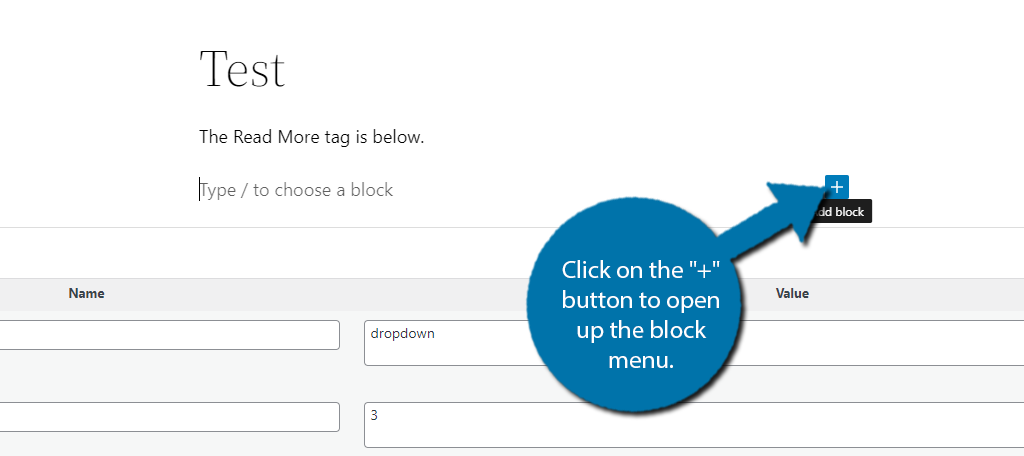
Type Read More into the search box and select the More tag.

And that’s it, your Read More tag is now in place. You can move it around like any other block in WordPress.
Adding Excerpts
Adding Excerpts is just as easy in the Gutenberg editor. Click on the Settings wheel.
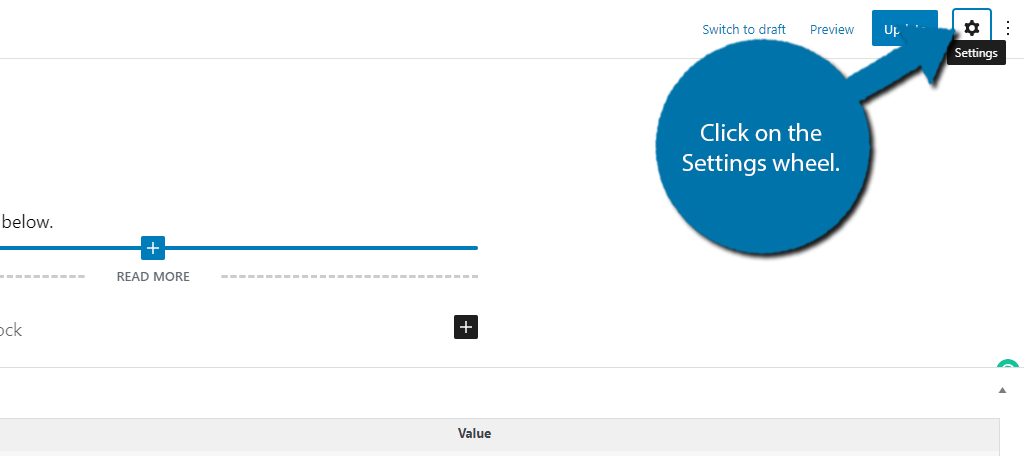
It is divided into two tabs. Click on the Post tab.
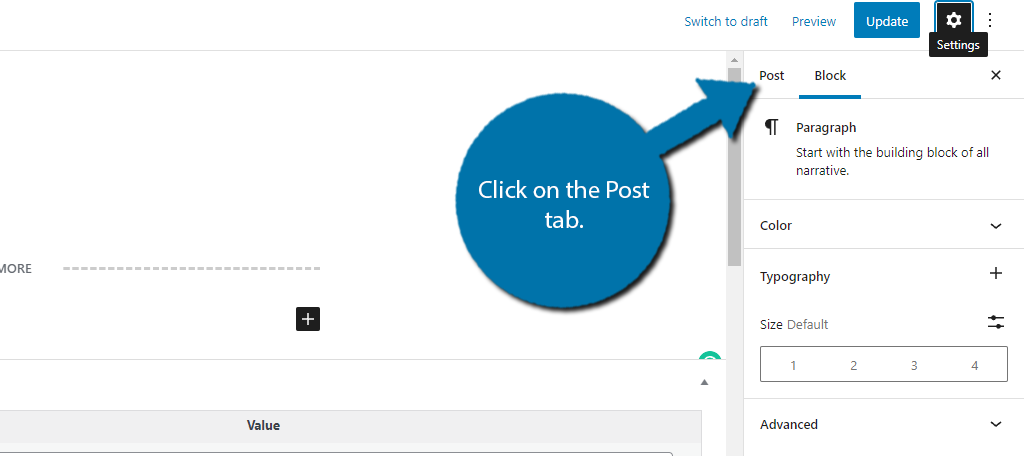
Locate the Excerpt option and click on it. Here you can enter an excerpt for both posts and pages.
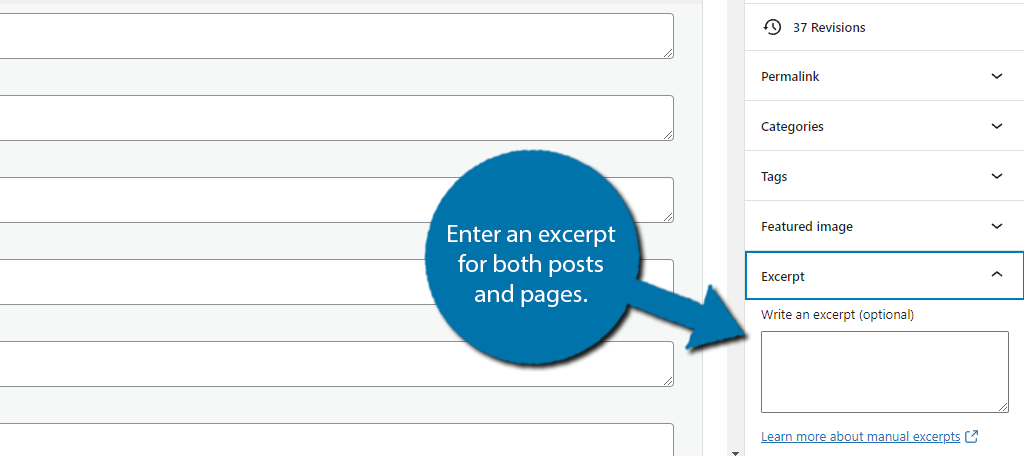
Congratulations on learning how to do this in the Gutenberg editor.
How to Show Excerpts and the Read More Tag in Classic
Adding Read More
This will be very quick. Simply open the post you would like to add the read more tag to. Inside of the text editor place the cursor where you would like the excerpt to stop. Try to keep it shorter than 100 characters.
Click on the “Insert Read More Tag” button in the toolbar.
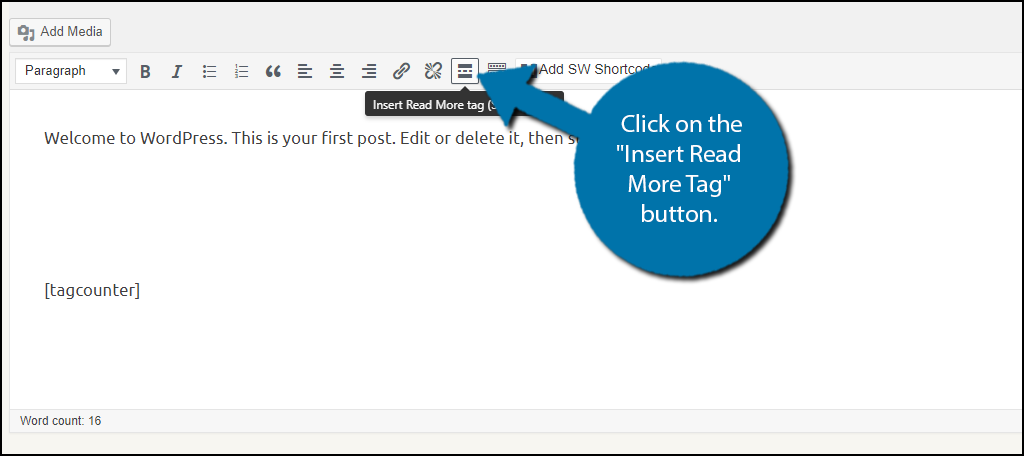
You will now see a dotted line with the word “MORE” appear on the screen. Everything above this line will appear as an excerpt, while everything under it will only be viewable when visitors click on the content.
Keep in mind that nothing above the line will be lost and when they click on the article the excerpt will still be part of the first section of the content.
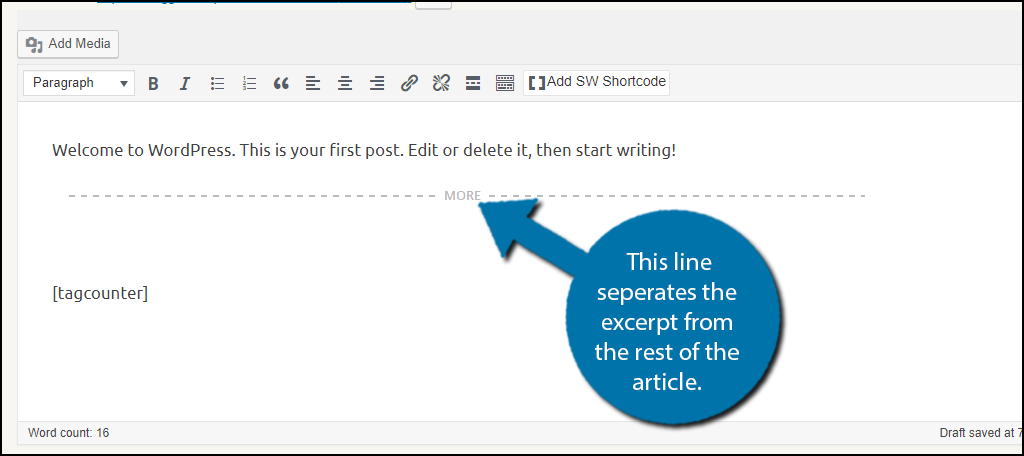
It’s really that simple. Keep in mind that you will have to do this for every post that you want to use the read more tag in, but it is quite simple.
Adding Excerpts
Unlike the previous guide, excerpts will prove slightly more challenging to set up in the Classic editor. Keep in mind you only need to do this once and it will be set up for all of your future content.
The first thing you need to do is turn excerpts on. On any of your posts, click on the “Screen Options” drop-down button. A list of additional options to add will appear.
Check the box for the “Excerpts” option.
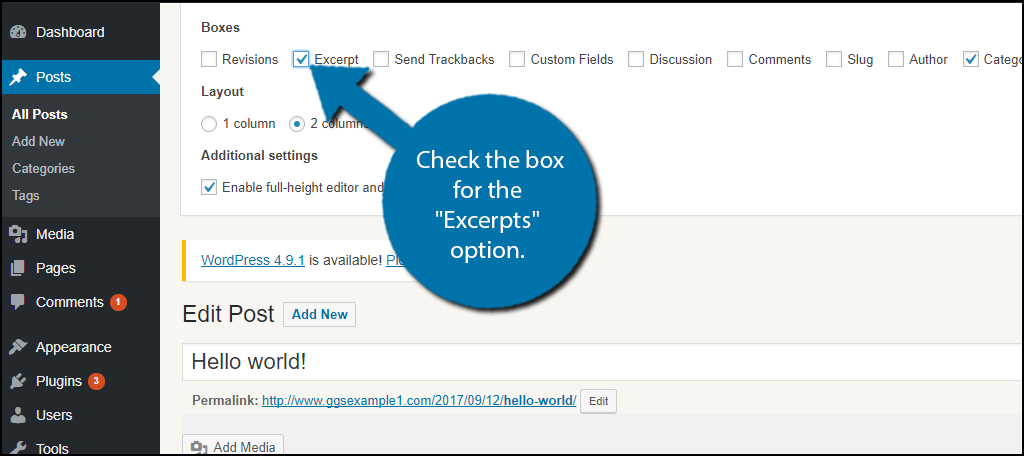
An Excerpts text box will now appear under the regular text box. This box is completely optional. By default, WordPress will use the first 55 characters as the excerpt, but this may not be the best representation of the content.
When this happens, use the Excerpts text box to create a custom excerpt that better represents the content.
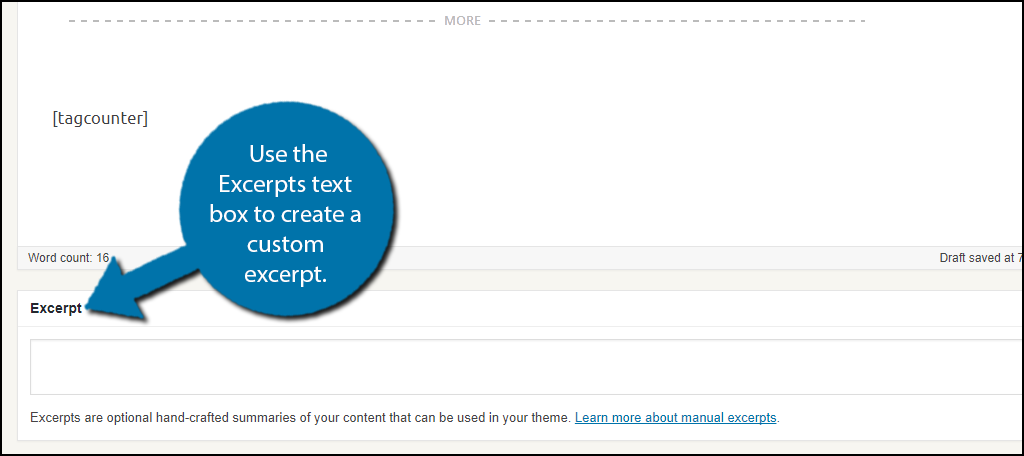
You may be done if you see everything working, but if you checked to see your excerpts in action, you will notice they are not actually visible. This is because your theme does not know to it has to show them.
This is where the tricky coding part comes into play.
Unfortunately, not all themes are created equal and some of them do not have excerpt support built-in. You will need access to the cPanel where your website’s information is stored.
The account information is given to you by your web hosting provider when you create an account.
Examining Excerpt or Read More Tags in WordPress
Excerpts are more complicated to set up in WordPress because not only do you need to set up excerpts, but you also need to tell WordPress to use those excerpts.
This is accomplished by editing code within your theme’s files, but this process is different depending on the theme you are using. Thankfully, once you have set them up, they will be done for every past and future post you make.
By default, the excerpts will take the first 55 characters of your post and end it with a “…” but you can change the number of characters or simply create a new excerpt to use that is different from your post.
This method will ensure that you never forget to set up an excerpt from a post.
The read more tag is much simpler to add since it is built right into the WordPress toolbar! The read more tag will require no code editing, which is why it is preferred by many websites.
You will know it is inserted correctly by the “——MORE——-” that appears in the editor.
Everything above this line will be used as the excerpt. The only hassle is doing this for every single post. There is no bulk action that you can use to add it to every post, which can be time-consuming if you have a lot of content to add these to, but it only takes one click to add.
Verdict
Let’s sum up everything into a few key points.
Excerpts
- A more complicated setup, but one-time only
- Require coding
- Add an excerpt to every single post even if you don’t want it to
- Make custom excerpt text
Read More Tag
- Very simple setup, just one-click, and no coding required
- Must manually add it to every post you want an excerpt for
- Cannot add custom excerpt text
Each has its own set of advantages and disadvantages, but it is completely up to you which one works best for your website. If you have a larger website with over a hundred posts, then you may want to consider using excerpts since one will be generated for each post.
On the other hand, if you are just starting out and don’t want to deal with coding, then using the read more tag may be the better option, but remember that both of them get the job done.
Pick the Best Option For Your Website
This is a very simple addition to your website that not only improves your SEO but also your page load times. This will greatly benefit your website, which is why many bloggers have been using either the post excerpts or the read more tag.
Either one will get the job done and it is up to you which one you pick, but remember each has advantages and disadvantages to consider.
Final Thoughts
Choosing between experts and the read more tag will be based a lot on personal preference, the amount of work you are willing to do, and what kind of result you want.
Either way, now you have instructions for both. I hope this tutorial was informative and gave you the information you needed to add an expert or read more tags in WordPress.
Which one have you chosen to use on your WordPress website? Why have you chosen one over the other?

